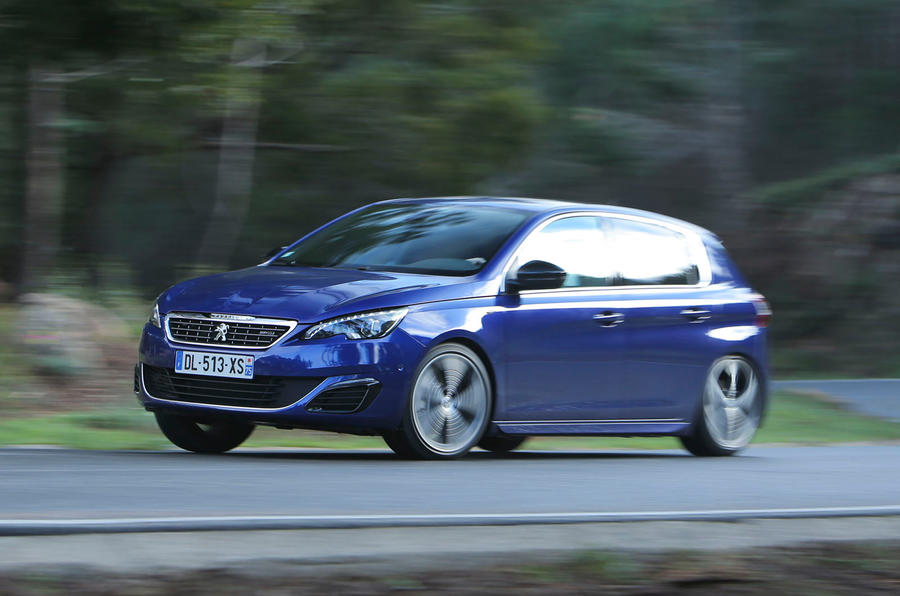What is it?
The latest in a long line of warm Peugeot hatchbacks, of which the French car maker has has a proud, if potted, history of making. There were XS versions of both the 309 and the 306, the latter even spawning the D-Turbo, an early take on the counter-intuitive concept of a sporty oil-burner. They were, just as intended, affordable fun. Of course, in the mid-1990s, 120bhp - or even 150bhp, in S16 guise - was easily sufficient enough to weight into the ‘warm’ fray. In 2015, the 308 GT requires 202bhp to earn its stripes.
That’s obviously a sign of these lardy, lavishly equipped times, the 308 being a decent-sized paddling pool heavier than its spartan forbears. It almost goes without saying that its much higher output is wrung from much less cylinder volume, too. Where once a 2.0-litre donkey was crucial, now Peugeot can turn to its favourite twin-scroll-turbocharged, variable valve-timed 1598cc THP son (although the 178bhp diesel variant is still in throwback displacement mode).
To harness the extra shove, the GT gets the established reheat treatment, meaning Peugeot has been tinkering rather redesigning. According to the manufacturer, new suspension settings mean the model is around 20 per cent stiffer at the front struts, 10 per cent stiffer at the rear torsion bar and with the respective anti-roll bars beefed up to a similar degree. The ride height has inevitably descended, too, by 7mm at the front and 10mm at the back. There are also bigger brakes and some stickier Michelins fitted to the new alloys.
What's it like?
Appropriately, the GT is mildly better looking than the standard 308. Never the most dynamic presence, the addition of some extra air scoops and deeper sills lift the car just far enough into ‘modified’ territory to seem duly enhanced (although some may find the supplementary, and very fake, chrome exhausts a little too much to stomach).
The interior is better still. Already a 308 high point, the GT announces its range-topping status by maxing out on the amount of plastic masquerading as metal, and it succeeds, for the most part, in looking chunkily expensive. There’s a dash of anthracite and red stitching, too, which is all very tasteful, and the amply cushioned sport seats fit the billing. Needless to say the GT doesn’t fix the 308’s inadequacies in rear legroom, but then it couldn’t be expected to.
What is expected, is a little bit of va va voom once under way. Being a mainstay of Peugeot’s line-up, the fizzy four-pot provides this in a familiar way. It lacks the initial length of stride that a larger engine would provide but the 1.6-litre petrol four-pot is full of hard-edged enthusiasm at high revs. At 7.5sec to 62mph, the GT is decently racy rather than outright fast and better through the gears than climbing out of them - where you’ll typically have to wait half a second for the blower to catch up.
The pace, though, feels fit for purpose given the considerate nature of the chassis’ makeover. The recalibration described above is faithfully transcribed onto the road, the GT feeling, more often than not, like a very modestly stiffened 308 on low-profile tyres. It is slightly less prone to throttle-on understeer than the 208 GTI and it corners gamely, although its tenacity is inevitably limited by the consideration shown to maintaining a congenial ride quality. That’s forgivable; less excusable in this guise is the continued inconsistency of the steering, which still leaves you unsure of how much input to apply on the model’s notoriously downsized wheel. Instinctively fun the GT isn’t.


























Join the debate
Add your comment
Don't get me wrong, I really
Like it
It's thirstiest on paper, but